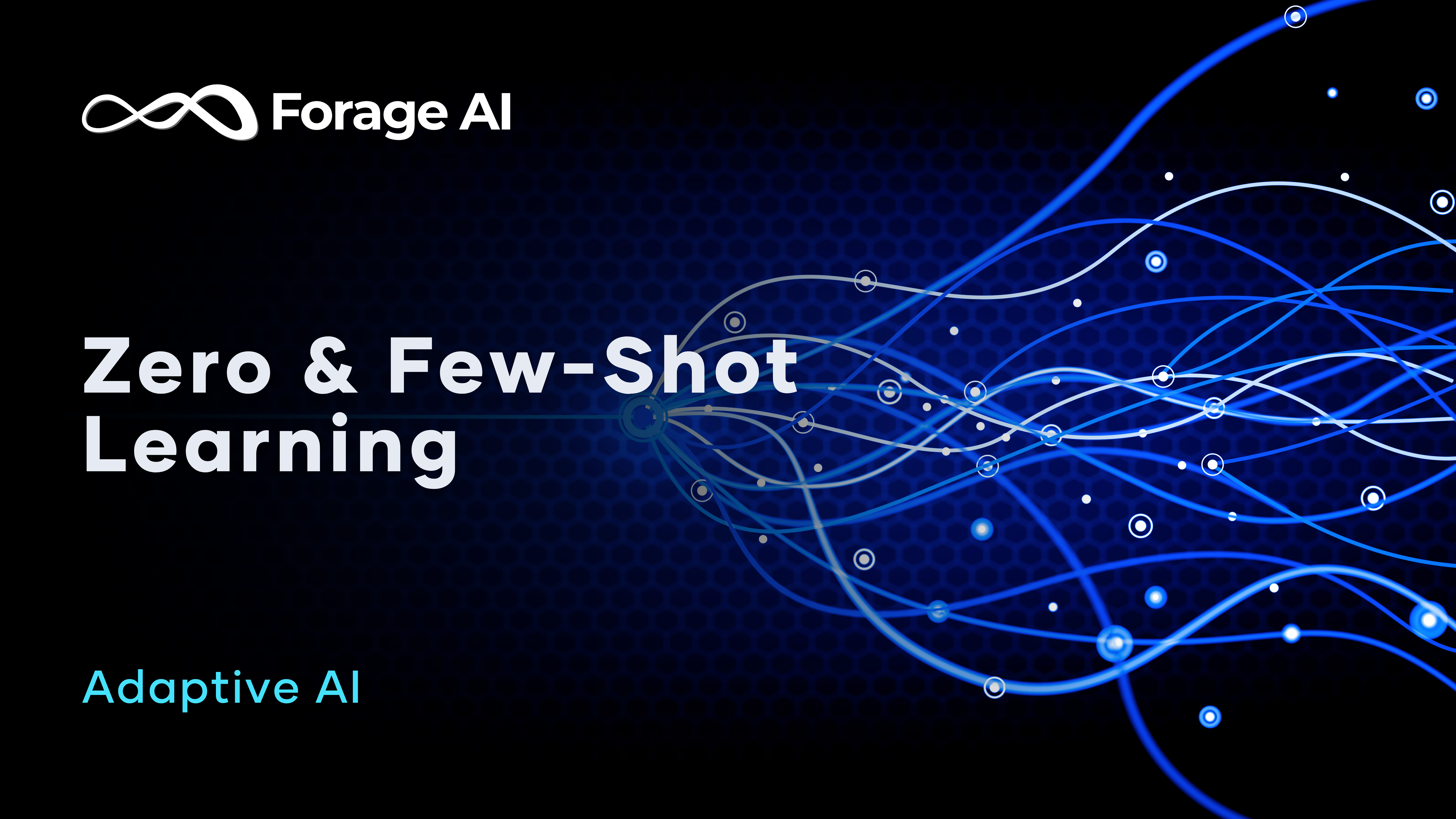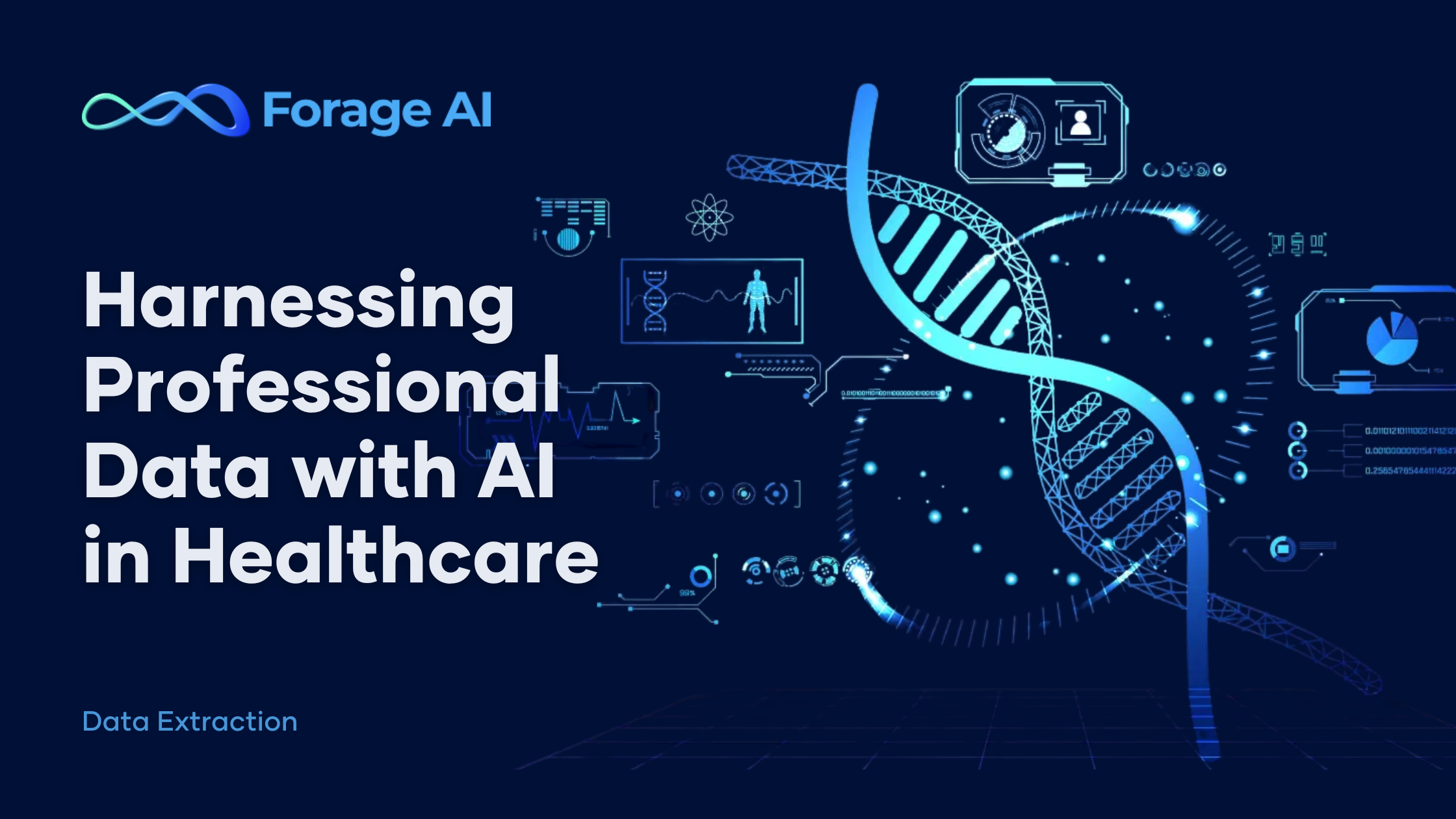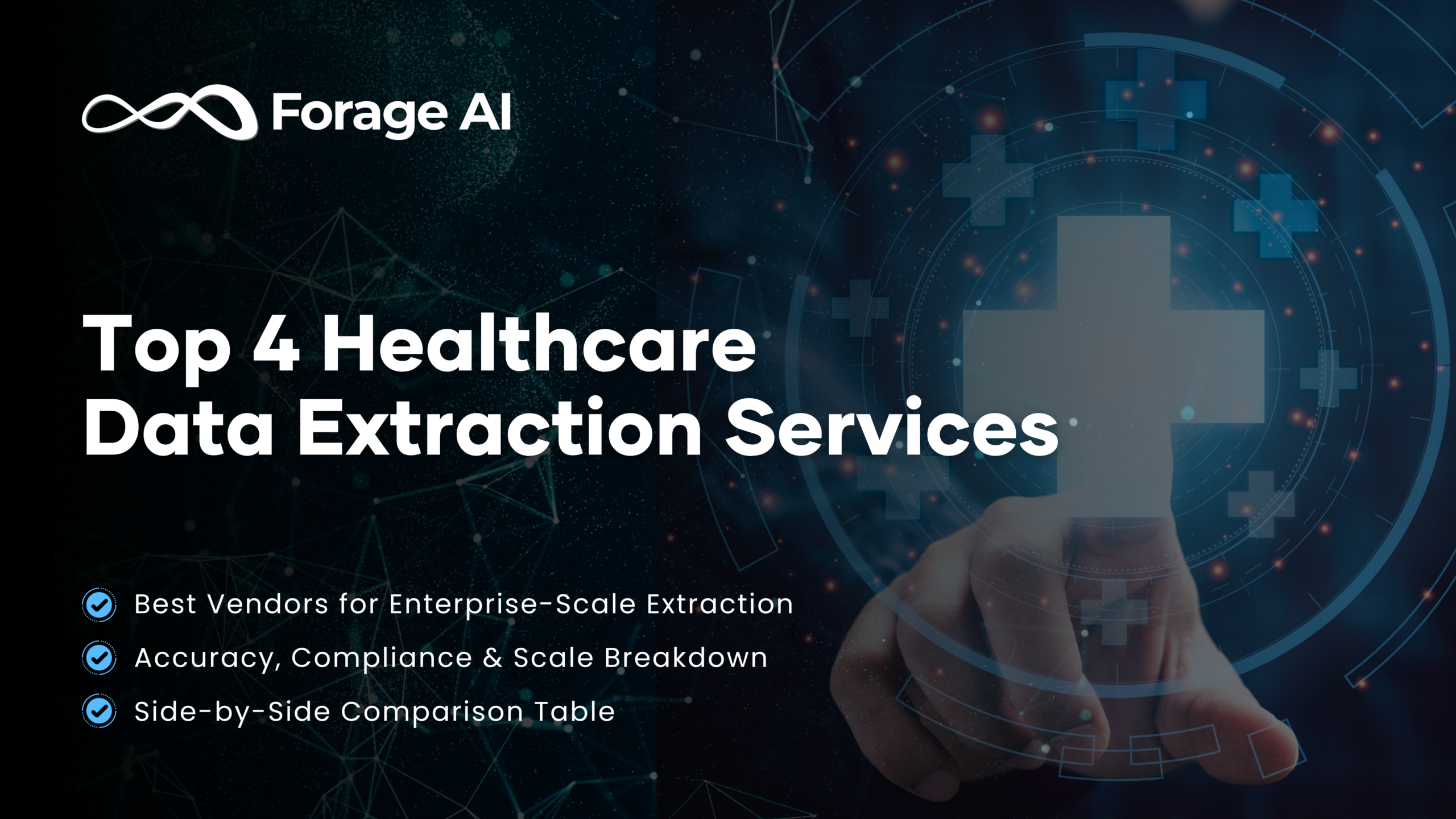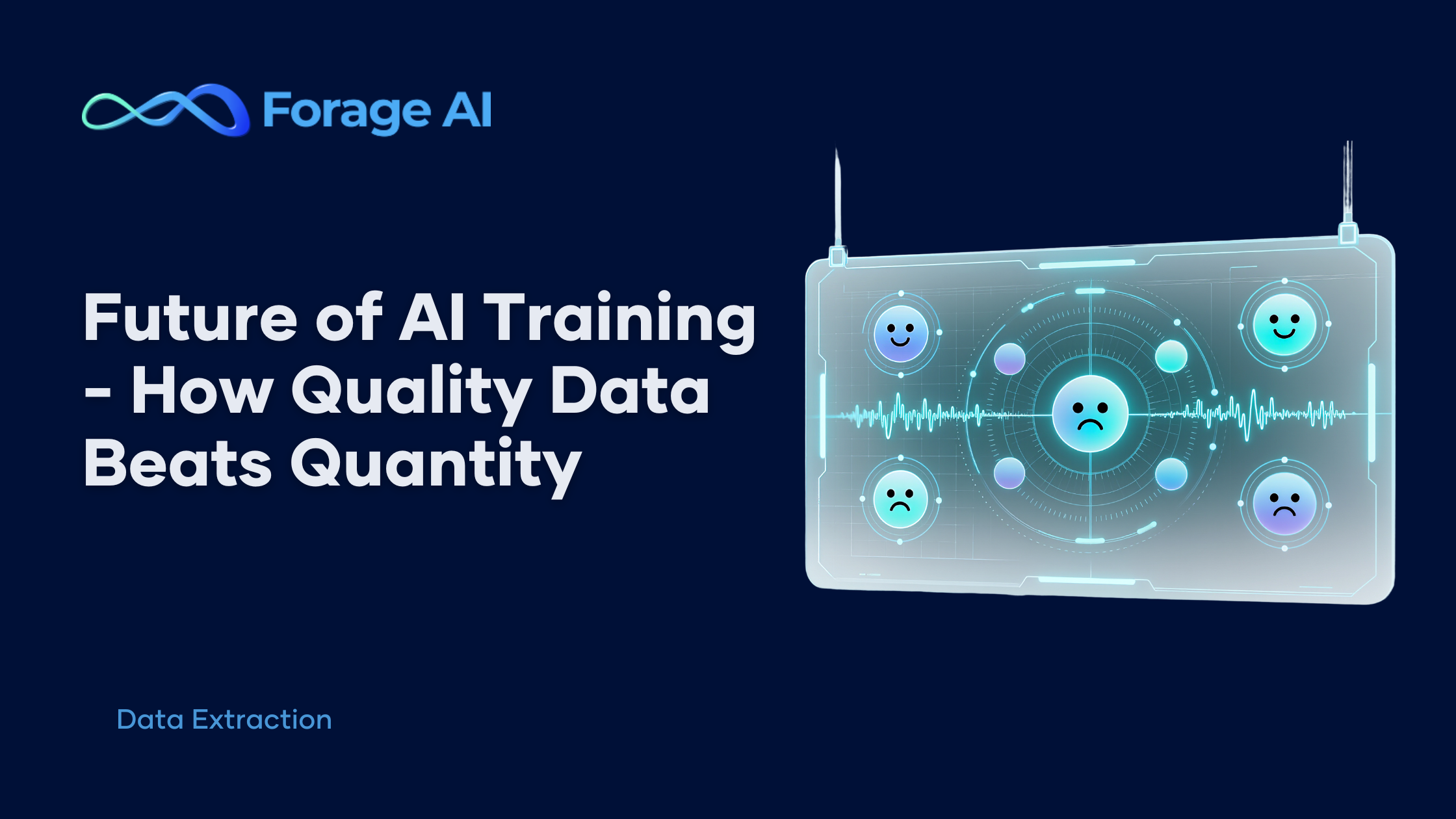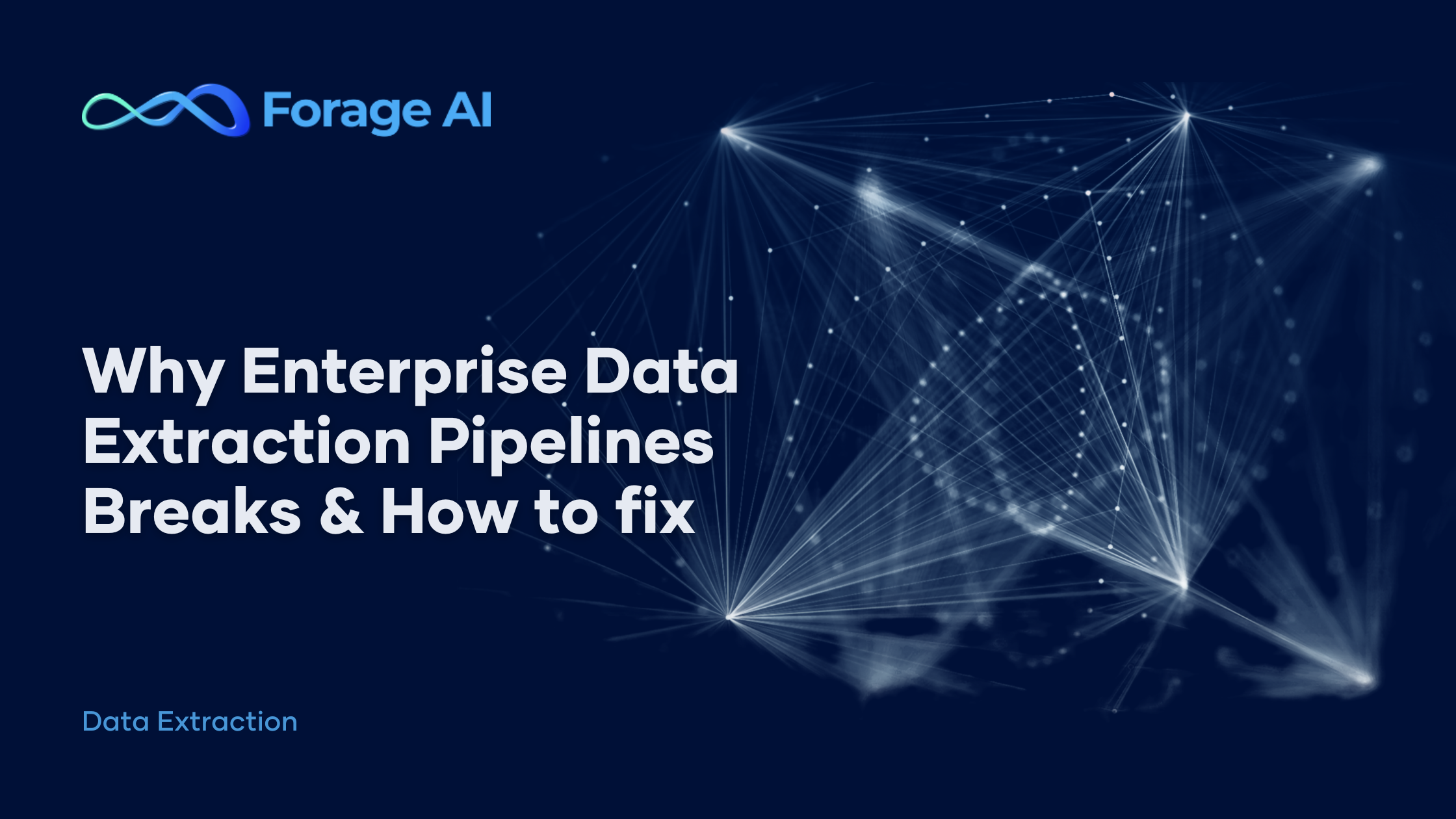In today’s data-driven world, businesses are increasingly dependent on artificial intelligence to transform raw information into actionable insights. Yet, traditional AI systems—reliant on vast quantities of labeled data—struggle to keep pace with rapid market demands and data diversity. This challenge has given rise to two transformative AI techniques: Zero-Shot and Few-Shot Learning, representing a shift from data-hungry models to systems capable of learning efficiently and adapting to new situations with minimal data.
These techniques are not merely incremental innovations; they signify a fundamental change in how AI systems learn, generalize, and operate in dynamic environments. Below, we explore the “why” and “how” of Zero-Shot and Few-Shot Learning, their relevance to data automation, and how Forage AI is pioneering these technologies to empower businesses.
The Evolution of Machine Learning: Why Traditional Approaches Fall Short
Traditional machine learning relies heavily on large, annotated datasets. This dependency comes with several significant drawbacks:
- High Data Dependency: Training a model requires thousands—sometimes millions—of labeled examples for accurate predictions, making data preparation a time-consuming process.
- Time and Resource Intensity: Preparing data and training AI models often requires weeks or months, consuming substantial computational power and human resources.
- Limited Flexibility: Adapting models to new tasks necessitates extensive retraining, resulting in rigidity and limited adaptability to evolving data environments.
- Subject Matter Dependency: Annotation often demands a deep understanding of the relationships within data, context, and domain-specific nuances to ensure accurate labeling. Without expertise in the subject matter, data labeling can result in inaccuracies, undermining the quality of the model’s predictions.
- High Costs: Annotation costs can quickly escalate, especially when dealing with complex, context-rich data that requires domain expertise. The financial burden of sourcing and annotating large datasets can deter companies from fully leveraging AI for specific tasks.
- Insufficient Data Challenges: Even with significant effort in annotation, some domains may suffer from a lack of comprehensive data. Insufficient or imbalanced datasets can fail to provide the holistic view needed for building effective models, limiting the AI’s capability to generalize and adapt across tasks.
For businesses facing rapidly changing markets, limited data, or new data types, these constraints can slow down AI deployment and hinder business agility. This is where Zero-Shot and Few-Shot Learning enter the equation, offering powerful alternatives that align with real-world demands.
Understanding Zero-Shot Learning: The Art of Learning Without Examples
Technical Foundation
Zero-Shot Learning (ZSL) is about enabling AI systems to make predictions about unseen tasks or categories using descriptions and contextual clues. It does not require labeled data for every possible scenario; instead, it relies on understanding relationships and semantic similarities between known and unknown categories.
How Zero-Shot Learning Works
- Semantic Embedding Space: AI models map data into a shared semantic space using embeddings—dense vectors representing relationships between concepts. This allows models to make educated guesses about unseen categories based on known characteristics.
- Knowledge Transfer: Pre-trained models leverage prior knowledge to link unseen tasks with existing categories using transfer learning. This means that the AI system can generalize across domains by understanding conceptual similarities.
- Contextual Clues: Advanced models use hierarchical knowledge structures to identify contextual cues, enabling them to draw meaningful insights without explicit examples.
Why Zero-Shot Learning Matters
In scenarios where labeled data is unavailable, time is short, or the data landscape is unpredictable, Zero-Shot Learning shines. It empowers AI systems to extract insights from new, unstructured data sources immediately, reducing costs and accelerating deployment.
Practical Example
Imagine a company facing a deluge of new types of documents. Traditional AI would require labeled examples for each new format. In contrast, Zero-Shot Learning enables the AI to analyze and categorize these documents instantly by understanding contextual relationships, enhancing data processing efficiency without a lengthy training phase.
Few-Shot Learning: Mastering New Tasks with Minimal Examples
Technical Architecture
Few-Shot Learning (FSL) builds upon Zero-Shot capabilities by incorporating a handful of labeled examples, allowing AI models to specialize quickly and precisely in new tasks with minimal data.
How Few-Shot Learning Works
- Meta-Learning: Few-Shot models use meta-learning to extract common patterns across tasks, allowing for rapid adaptation with only a few examples. This process, known as “learning to learn,” enables the AI to identify the core features of new data efficiently.
- Data Augmentation and Feature Enhancement: Techniques like contrastive learning are applied to amplify differences between similar data points, boosting the model’s understanding and ensuring accurate predictions even with a limited dataset.
Why Few-Shot Learning Is Relevant
Few-Shot Learning is invaluable for industries that lack large datasets or face unique data challenges. It allows companies to maintain accuracy and adaptability without investing heavily in data collection and annotation.
Real-World Example
In the legal sector, Few-Shot Learning enables AI to recognize specialized legal clauses in new contract types with just a handful of examples. This capability drastically reduces manual labor while increasing accuracy, making it a game-changer for time-sensitive fields.
Integration with Modern AI Architecture
Large Language Models (LLMs)
LLMs like GPT-4 rely heavily on Zero-Shot and Few-Shot Learning to:
- Generalize Across Tasks: Handle a wide array of text-processing tasks without extensive re-training.
- Contextual Understanding: Grasp nuances in text with only a few examples, aiding data extraction from complex, unstructured datasets.
- Data-Driven Insights: Generate insights even from minimal inputs, making them ideal for content-heavy industries like legal, healthcare, and finance.
Retrieval-Augmented Generation (RAG)
Combining RAG System with Zero-Shot and Few-Shot Learning creates AI systems that:
- Retrieve Contextually Relevant Data: Use minimal examples to select accurate information dynamically.
- Provide Adaptable Solutions: Handle ambiguous or unfamiliar data scenarios, making these techniques ideal for real-time, unstructured data environments like web scraping and data mining.
Agentic AI Systems
Autonomous AI agents leverage these learning techniques to:
- Make Real-Time Decisions: Adapt to new information flows and environments on-the-fly.
- Optimize Workflow: Automate complex processes without manual reconfiguration, essential for industries with fluctuating data requirements.
Real-World Impact: Transforming Data Automation
Document Processing Revolution
Traditionally, document processing—like extracting data from invoices—required thousands of meticulously labeled examples. Each data point, such as invoice numbers, dates, vendor details, and payment terms, needed extensive manual annotation to ensure accuracy. This often included contextual footnotes, multipliers, and specific guidelines for each type of field. To build a reliable system, separate machine learning models had to be trained for each task: one for field detection, another for context interpretation, and another for data validation. This multi-model dependency made traditional approaches costly, time-consuming, and prone to errors.
However, Zero-Shot and Few-Shot Learning have revolutionized this process:
- Unified Model Architecture: By leveraging pre-trained foundational models that have been built on vast datasets and trained on diverse information, Zero-Shot and Few-Shot Learning enable comprehensive document understanding with minimal data input. Instead of creating a separate model for each field, these advanced techniques use a single, flexible model that understands the semantics of the document layout, allowing it to extract complex information seamlessly.
- Rapid Adaptation to New Formats: Unlike traditional methods, which might require weeks of additional training data to adapt to a new invoice format, Zero-Shot and Few-Shot Learning can handle unseen document structures instantly. The AI can infer the meaning of a data field—such as recognizing a new type of discount category—without specific training examples, thanks to its extensive foundational knowledge.
- Reduced Data Dependency: Whereas traditional models need thousands of examples to detect patterns accurately, Zero-Shot and Few-Shot techniques can do the same with only a handful or even zero-labeled examples. This not only accelerates the setup time from weeks to hours but also significantly reduces annotation costs.
Web Data Extraction Enhancement
Web data automation has also undergone a transformation with Zero-Shot and Few-Shot Learning. Traditionally, extracting data from websites required tailored web scrapers and a high degree of manual intervention. Every time a website’s layout changed, reprogramming was necessary, and schema modifications demanded additional effort. This manual dependency created bottlenecks in data collection, with the added challenge of ensuring schema consistency across different sites.
Zero-Shot and Few-Shot Learning have streamlined this process:
- Instant Adaptation to Website Changes: Conventional web scraping tools struggle with dynamic content shifts, often breaking when site layouts are updated. In contrast, Zero-Shot and Few-Shot techniques adapt to these changes without reprogramming, using pre-trained models to infer the structure of new layouts on the fly. This capability ensures continuous, reliable extraction even in the face of unpredictable changes.
- Dynamic Schema Mapping: Traditionally, web data extraction required hard-coded mappings between content and database schemas. Any change in data structure meant significant reprogramming effort. Now, Zero-Shot Learning can interpret the semantic meaning of webpage elements, automatically mapping them to the right database fields without manual schema updates. Few-Shot Learning fine-tunes these mappings with minimal examples, ensuring that data remains accurate across a wide range of formats.
- Scalable Automation with Fewer Resources: Previously, building robust web scrapers demanded extensive data collection, manual fine-tuning, and dedicated engineering teams. With Zero-Shot and Few-Shot Learning, the data extraction process becomes much less resource-intensive, reducing operational costs while enhancing accuracy and flexibility. This makes AI-driven web data extraction scalable and responsive to new requirements.
By minimizing data dependency, enabling rapid adaptation, and eliminating the need for manual intervention, Zero-Shot and Few-Shot Learning have reshaped how businesses approach data automation. Forage AI stands at the forefront of this revolution, delivering smarter, adaptive solutions that cater to industry-specific needs while minimizing the complexities associated with traditional AI models.
To illustrate this change, consider the metrics below comparing conventional machine learning with the new, advanced AI methods:
| Metric | Traditional ML | Zero/Few-Shot |
|---|---|---|
| Training Data | 10,000+ examples | 0-5 examples |
| Setup Time | Weeks | Hours |
| Accuracy | 85-90% | 92-97% |
| Flexibility | Low | High |
This table highlights the efficiency gains when employing Zero-Shot and Few-Shot Learning: a shift from weeks to hours, thousands of examples to none, and significantly enhanced flexibility—making these methods ideal for dynamic environments.
Forage AI: Pioneering Advanced Learning in Data Automation
In a world where data drives decision-making, traditional AI approaches—demanding extensive data labeling and heavy computational resources—often fall short. The classic “garbage in, garbage out” problem looms, where poor-quality data leads to unreliable insights, and companies face high labeling costs just to get AI systems operational. These methods are resource-intensive, slow, and can struggle to adapt to rapidly changing business landscapes.
Forage AI breaks this mold with smarter, adaptive solutions. By harnessing the power of Zero-Shot and Few-Shot Learning, Forage AI eliminates the need for massive labeled datasets, offering tailored solutions that adjust to business-specific use cases. This means:
- Reduced Costs: No more sinking resources into endless data annotation. Forage’s technology leverages minimal examples or none at all, drastically cutting data preparation expenses.
- Faster Implementation: Avoid the lengthy training cycles typical of traditional models. Forage’s adaptive AI learns from existing information quickly, allowing for faster deployment of AI solutions.
- High Precision with Less Data: Utilizing advanced AI techniques, Forage’s systems can filter out irrelevant data, ensuring that only high-quality, relevant information powers your analytics. This smarter data filtering reduces noise, minimizes errors, and enhances model accuracy.
- Tailored to Your Needs: Forage’s use of Zero-Shot and Few-Shot Learning allows for solutions that are highly customizable to industry-specific challenges, ensuring AI systems are not only adaptable but also precise in extracting and analyzing the data that matters most to your business.
With Forage AI, businesses can now leverage AI-driven insights without being burdened by data limitations, leading to smarter, faster, and more efficient solutions tailored to your unique needs.
Conclusion: Embracing the Future of Adaptive AI
Zero-Shot and Few-Shot Learning aren’t merely incremental upgrades—they are a reimagining of AI’s core capabilities, setting new standards for how machines interpret and engage with data. These advancements signify a departure from outdated, data-heavy paradigms, allowing AI to transcend traditional limitations and embrace a future defined by adaptability, speed, and precision. Forage AI is at the forefront of this transformation, harnessing these technologies to deliver solutions that are not just advanced but fundamentally transformative.
By reducing reliance on vast, costly labeled datasets, Forage AI empowers businesses to unlock the full potential of AI with minimal resources. The capability to instantly adjust to new data formats, streamline complex workflows, and provide accurate, targeted insights positions Forage AI as a leader in modern data automation.
For companies seeking to drive innovation, optimize processes, and maintain a competitive edge, embracing Zero-Shot and Few-Shot Learning isn’t optional—it’s essential. Forage AI offers the expertise and technology to navigate this new era, enabling organizations to focus on insights rather than the burdens of data preparation.
Now is the time to revolutionize your approach to AI. Contact Forage AI to explore how our advanced solutions can turn your data challenges into strategic advantages, fueling impactful decisions and propelling your business forward into a future shaped by intelligent automation.
